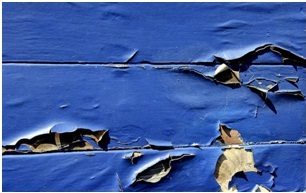Why Does Paint Blister?

Image credit: herefordcat
After completing a paint job, the last thing you want to see is paint blisters and bubbles. While latex and acrylic paints are most prone to blistering, bubbles can form on all paint types, and on both interior and exterior paint jobs.
How Do Paint Blisters Occur?
Blistering occurs when the top coat of paint comes away from the coat beneath it and forms an air bubble, which may eventually crack. Paint blisters are unpredictable, and can be caused by a range of factors.
- Moisture is a common cause of paint blisters, so special care must be taken to ensure all surfaces are properly dried before they are painted. You’ll need to make sure you don’t paint exteriors that have recently been rained on, or begin painting an exterior if rain is predicted. Humidity can also cause blistering. Painting in a tropical climate requires special care.
- Painting an unclean surface can also cause blistering, as dirt can get caught between two layers of paint and prevent proper adhesion. Ensure all surfaces are cleaned thoroughly, and left to dry.
- Mixing different types of primers or paints can also cause paint blisters, particularly on surfaces that are exposed to the sun.
How to Avoid Paint Blisters
Like we said, paint blisters are unpredictable, and it can be difficult to pinpoint the cause. The best thing you can do to avoid paint blisters is properly prepare your surface.
Here are three preparation steps that may prevent paint blisters:
- Sand and clean the surface, and allow it to dry out.
- Use a primer and a paint that are made by the same manufacturer.
- Allow the primer and each coat of paint to dry completely before applying another coat.
Remember to take note of the weather. If 2 weeks of rainy weather is predicted, reschedule your paint job. You should leave exteriors that have been rained on to dry for 4-8 hours.
If you have cleaned and primed your surface and painted in ideal weather conditions and blisters still occur, you can remove the paint and start again. If blisters continue to form, the cause may be the mix of the paint. You can test this by painting on a ‘test’ surface before painting on your wall.
Paint blisters are a common paint problem, and can be difficult to remove yourself. If your home has blistered paint and you’d like it removed, or if your looking to repaint and you want to avoid paint blisters altogether, give us a call on 07 3829 5735 or shoot us an email.
